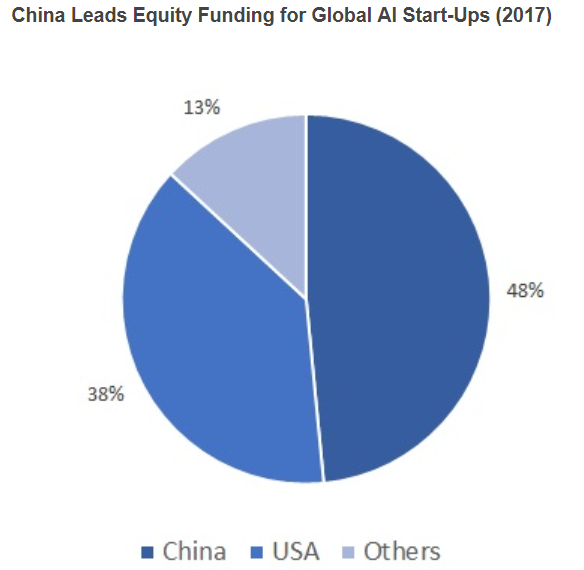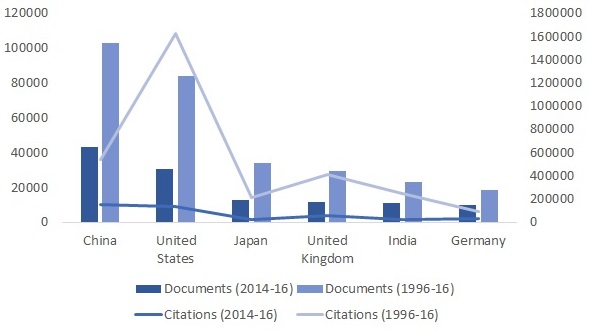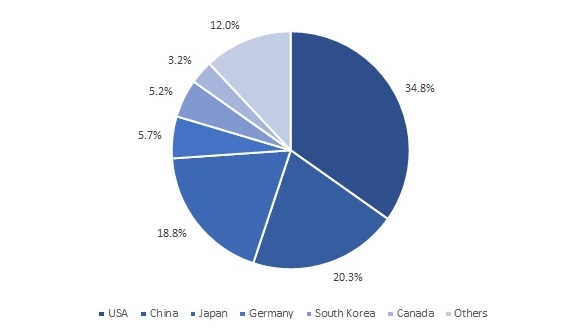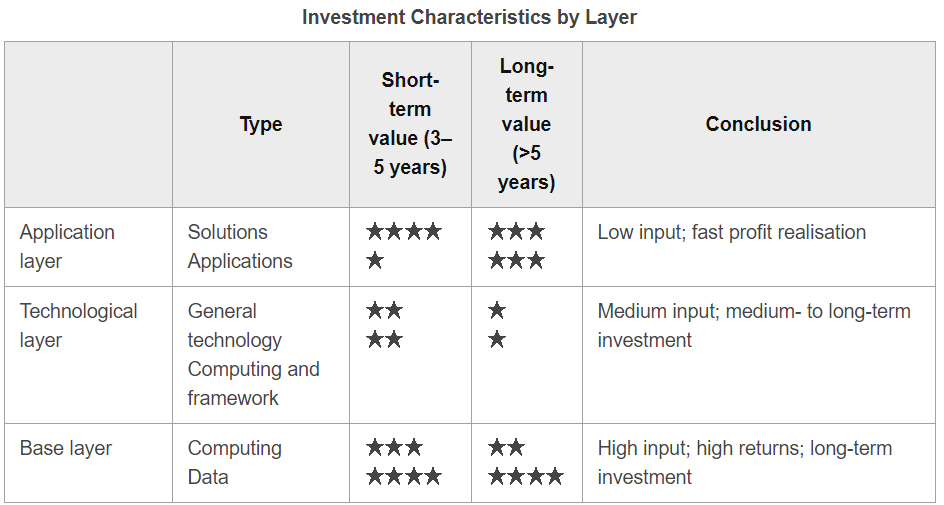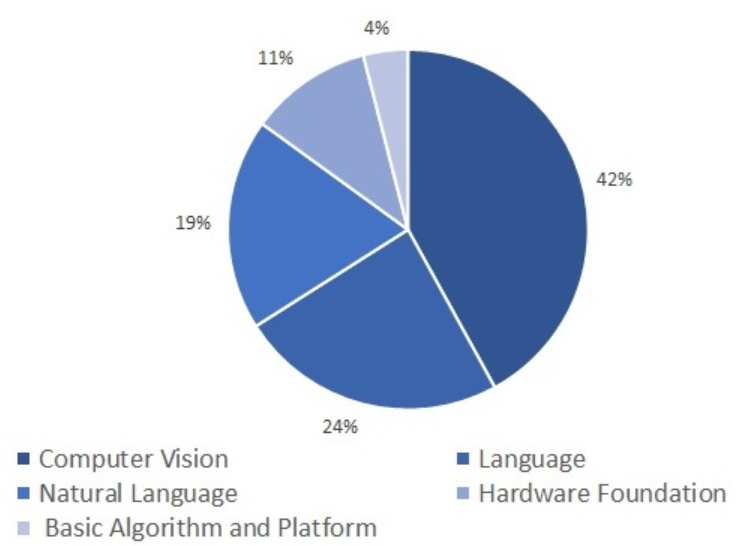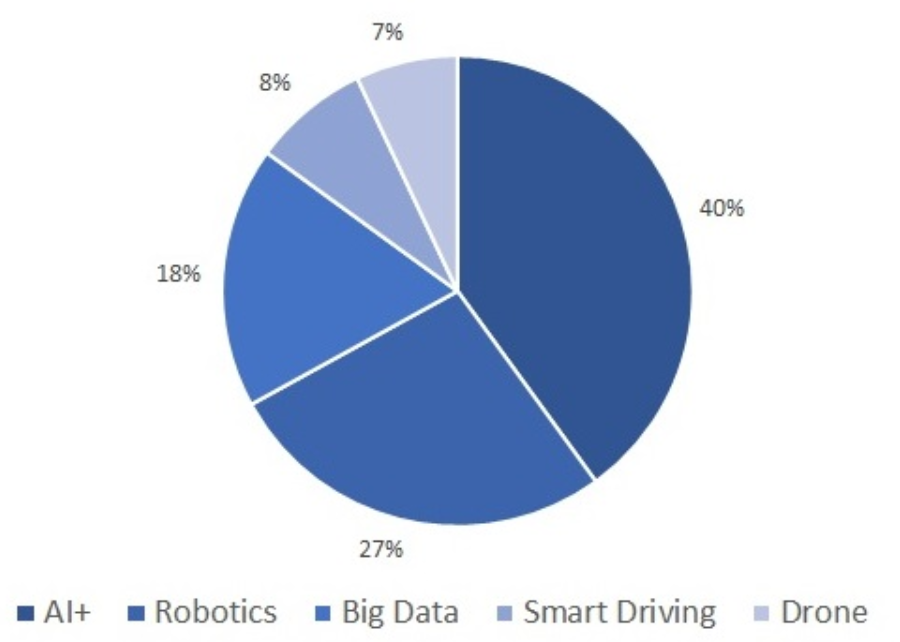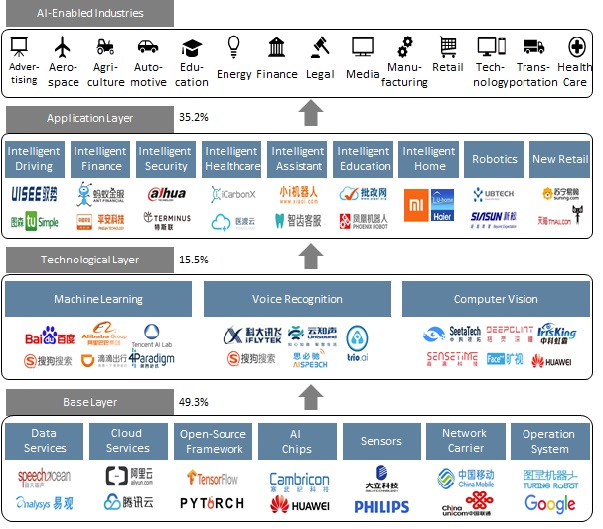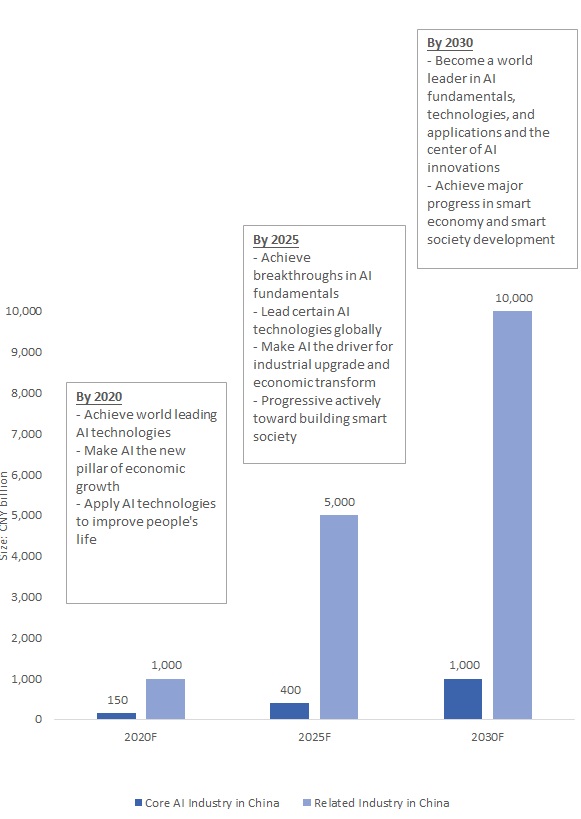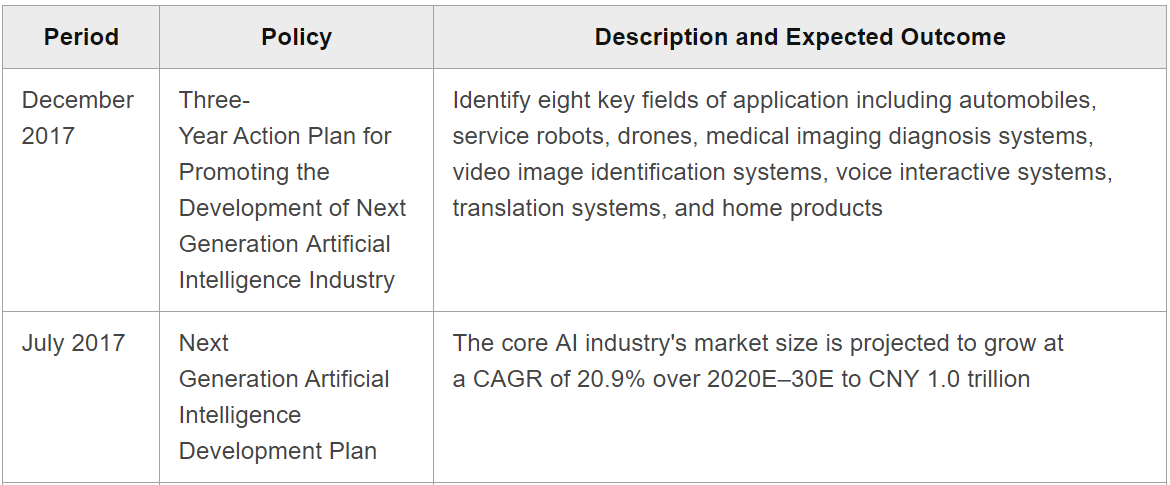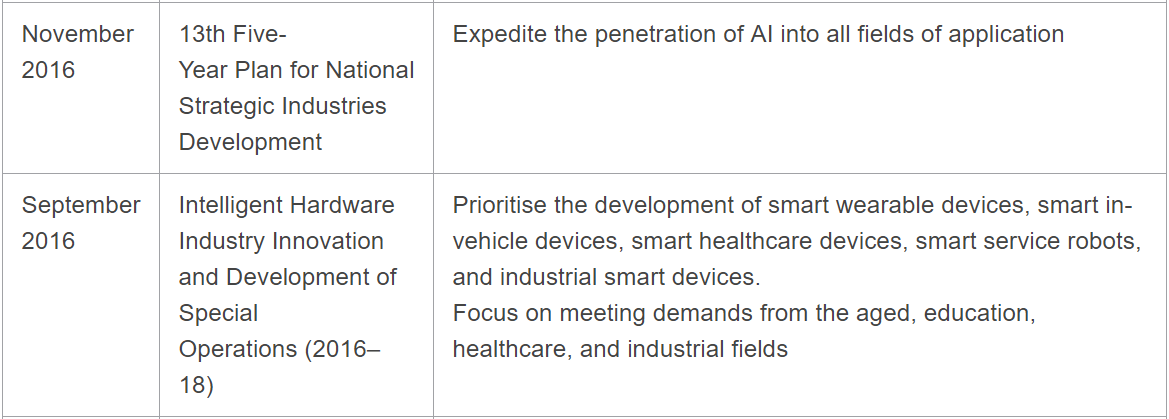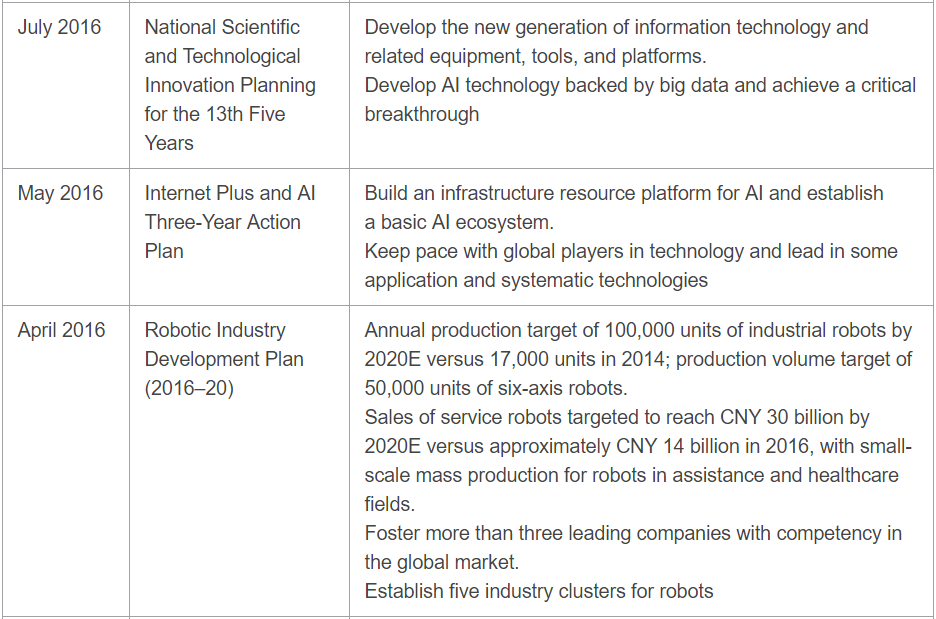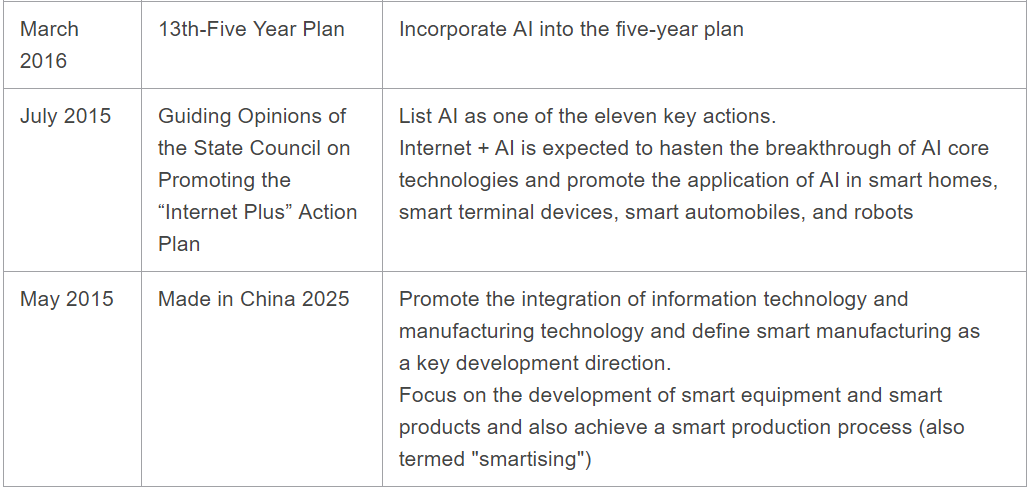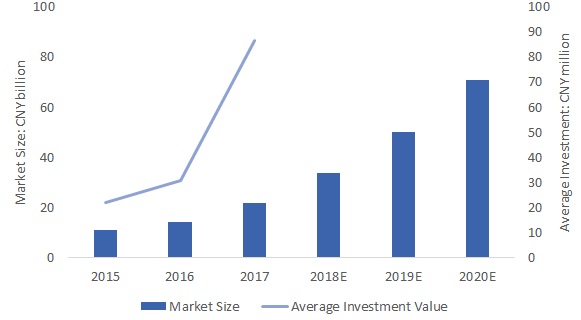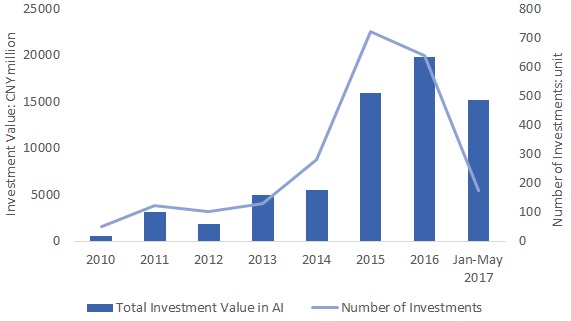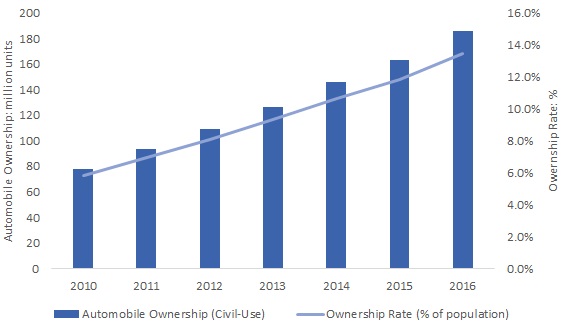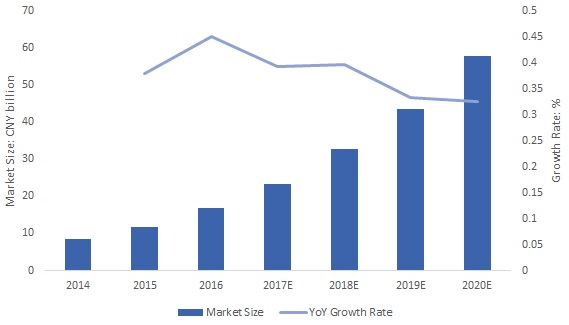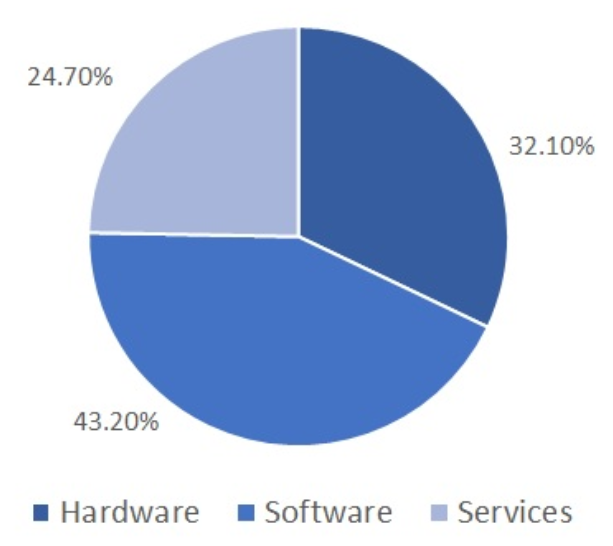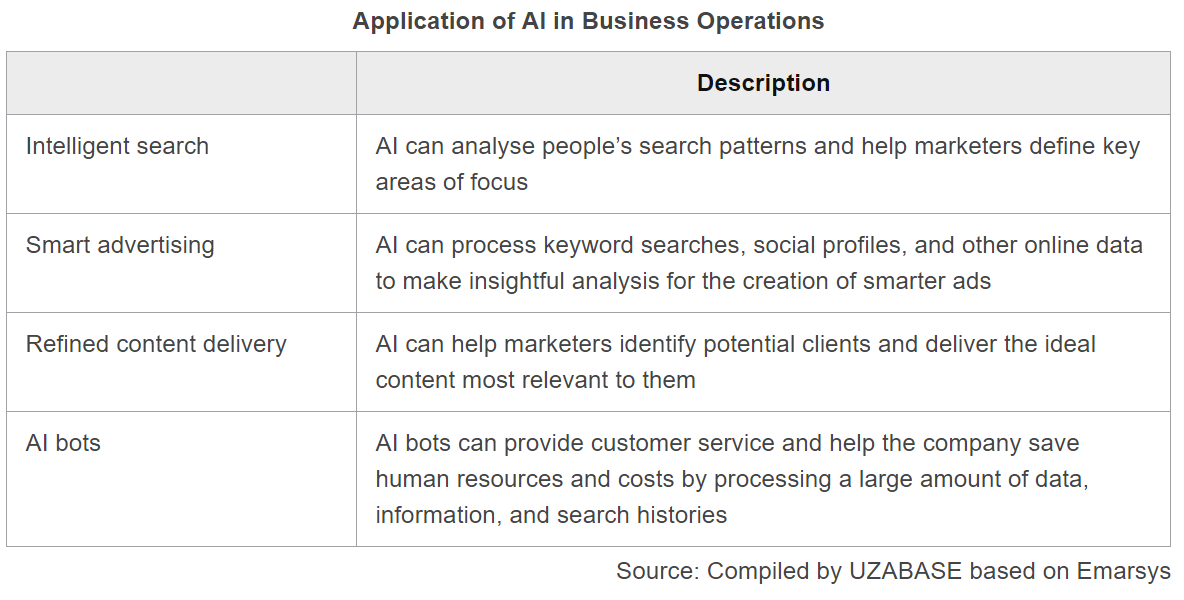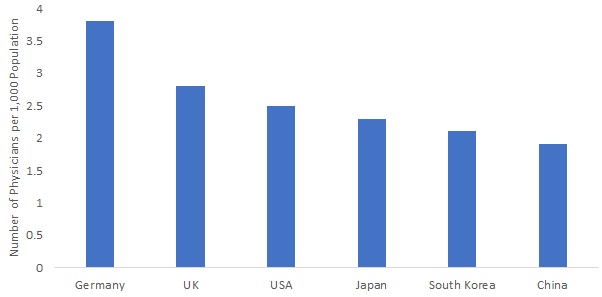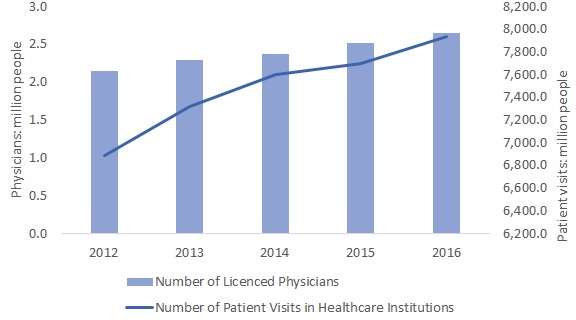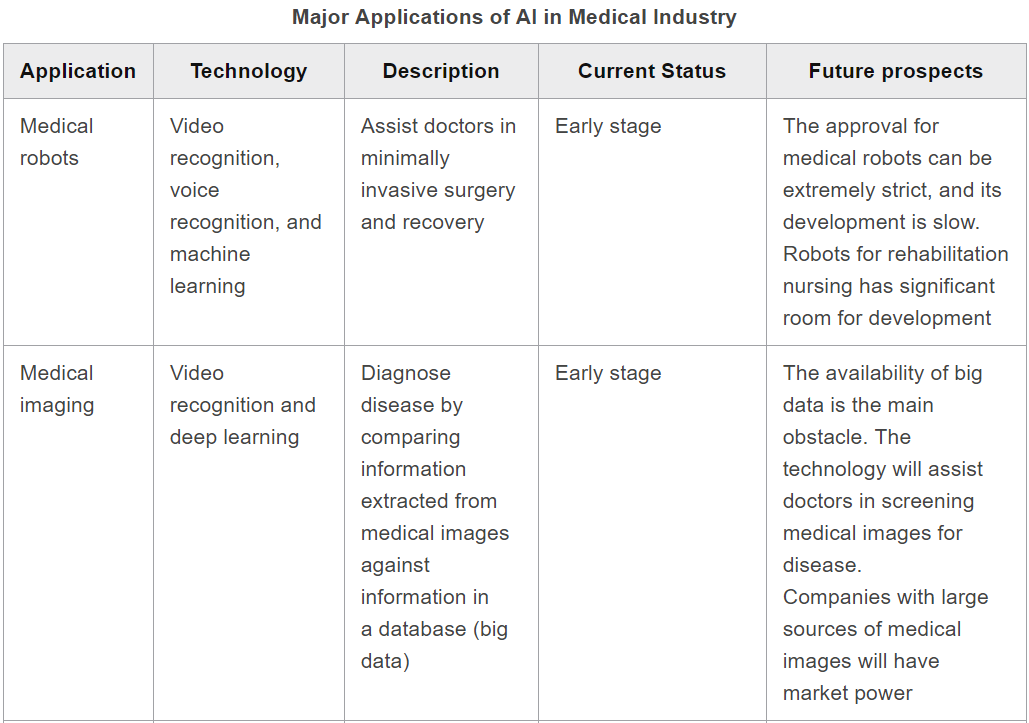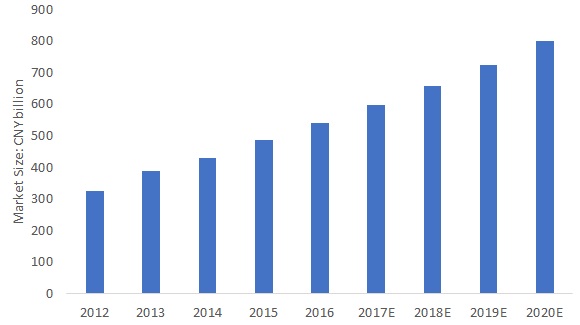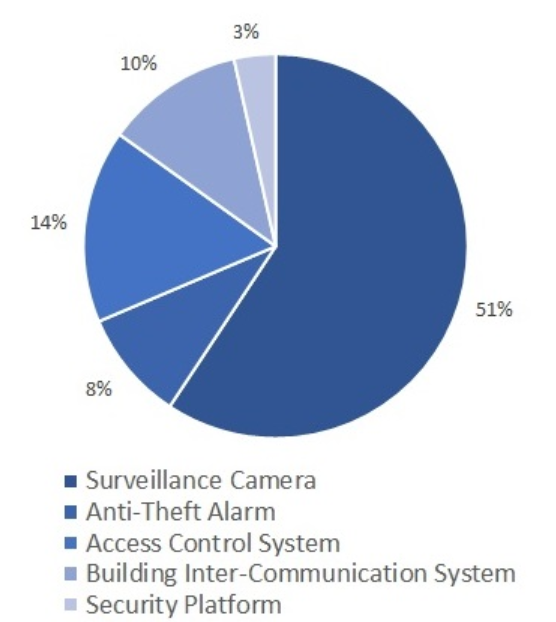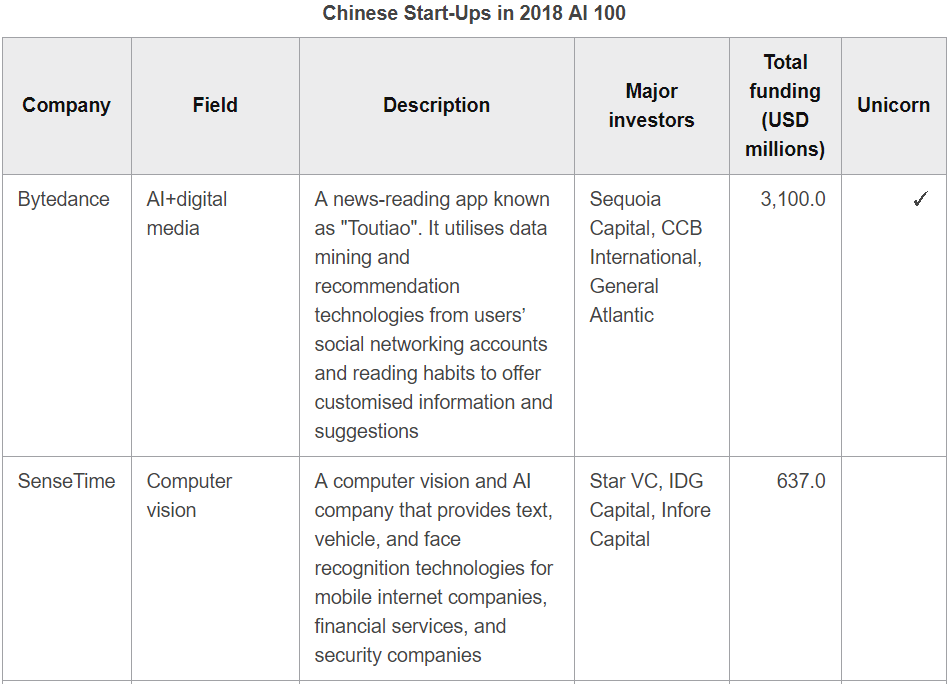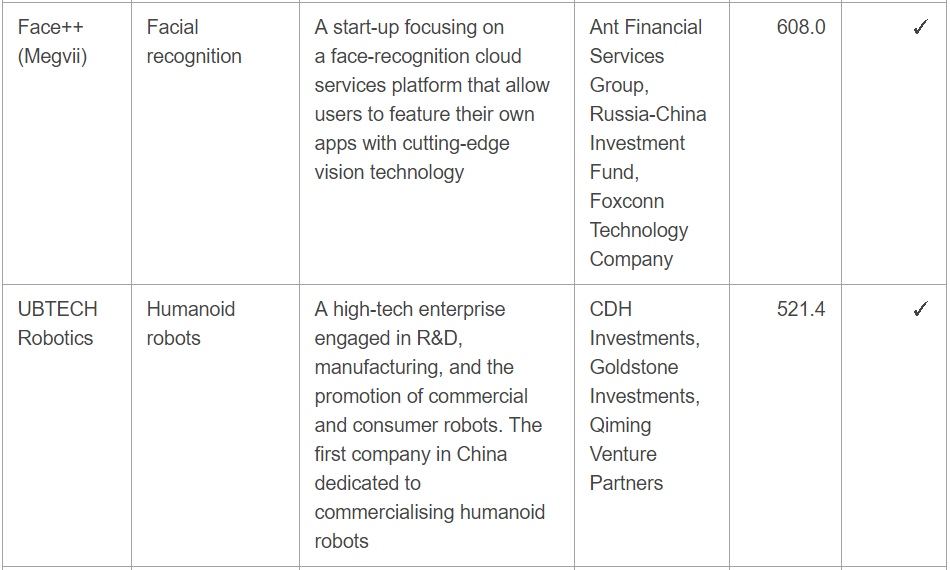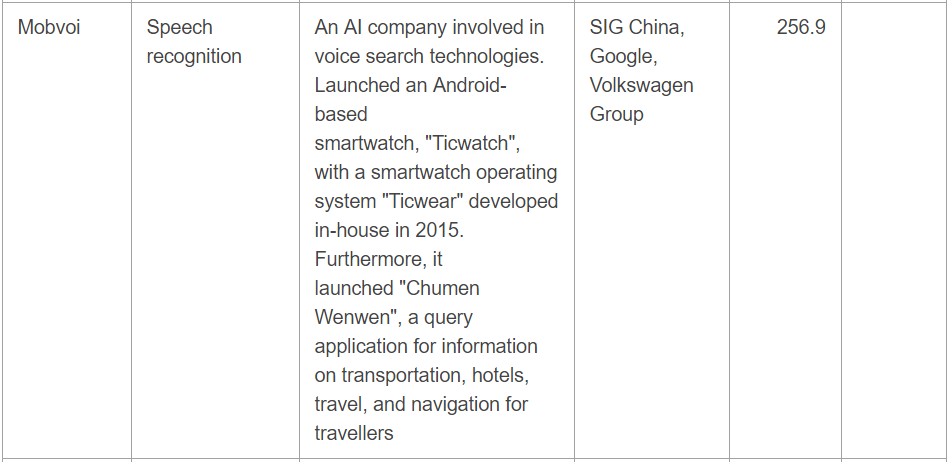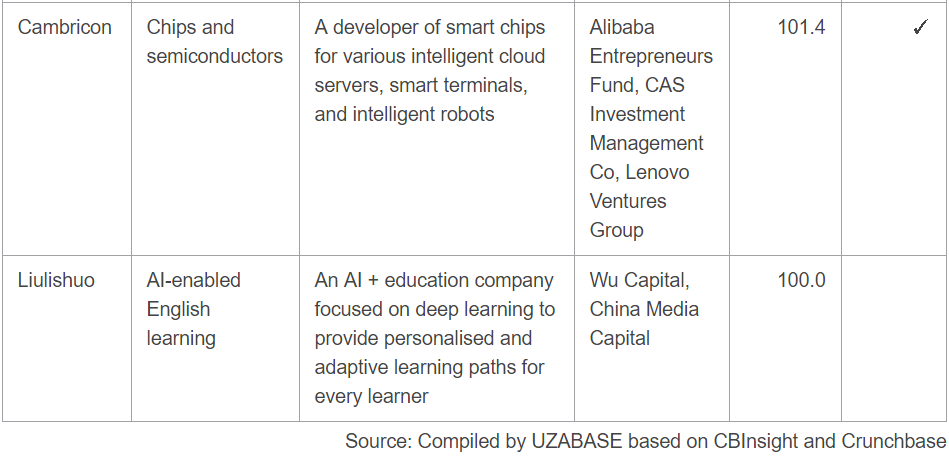Can AI Be China’s Next Game Changer?
|
China has positioned itself as a leading global superpower in the artificial intelligence (AI) space, second only to the USA. The Chinese AI market was estimated at CNY 21.6 billion in 2017 (0.3% of 2017 GDP), i.e. at around 25.9% of global AI market revenue.While China lags significantly behind the USA in CB Insight’s 2018 AI 100 (a list of the most promising 100 AI start-ups globally), winning just seven slots, it dominated equity funding for global AI start-ups (a share of around 48% in 2017 against the USA’s around 38%) |
|
Equity investments in local AI companies tend to be concentrated more in data, autonomous driving, and ‘AI + traditional’ industries that focus on higher returns or faster profit realisation, unlike in the USA, where the focus is on machine learning. |
|
China is actively fostering talent dedicated to AI R&D, as introducing AI to traditional industries has become a necessity not only to solve the country’s workforce deficiency (as its population ages rapidly), but also to reduce labour costs and increase productivity. According to Mckinsey, around 50% of work in China is replaceable by AI automation, potentially contributing to annual economic growth of 0.8–1.4 percentage points. In the State Council’s Next Generation Artificial Intelligence Development Plan of June 2017, the government provides an aggressive forecast for China’s core AI market size: CNY 150.0 billion in 2020E (more than double the estimate of around CNY 60–70 billion by other sources) and CNY 400.0 billion in 2025E (implying a CAGR of 21.7% over 2020E–25E). The main industry drivers include autonomous driving, big data, business (retail, marketing, and advertising), healthcare, and security. |
|
How Is China Positioned in the AI Space? |
|
Second-Largest AI Market After USA, Accounting for Quarter of Global Industry; Significant Progress in Funding, Scholar Documents, and AI Patents |
|
Although the USA currently dominates the AI industry, China is close behind and challenging this dominance in the future. According to the China Academy of Information and Communications Technology (CAICT), in 2017, the Chinese AI market size came in at CNY 21.7 billion, accounting for 25.9% of global AI market revenue based on International Data Corporation (IDC*) data. In CB Insights’ 2018 AI 100 (a list of the most promising 100 AI start-ups globally, selected from a pool of more than 2,000 start-ups from 9 countries), China ranked second, with 7 Chinese companies making the list, behind the USA, which had an overwhelming 76 companies qualifying. Moreover, 4 of these Chinese start-ups made it to the ‘unicorn club’ (private companies valued at USD 1 billion or higher), comprising nearly half of a total of 11 that qualified from the AI 100 list. CB Insights also states that China is racing ahead in AI start-up funding, accounting for about 48% of global AI funding in 2017, compared with 38% for the USA and just 13–14% for the rest of the countries. Moreover, China has accumulated the most scholar documents in AI (102,593 papers) over 1996–2016, surpassing the USA by around 22% (83,922 papers), although citations of Chinese papers (536,715 units) lag far behind the USA’s (1.5 million units). This indicates an increasing amount of talent in China dedicated to AI R&D, and this in turn bodes well for the advancement of AI technology, even if scientific excellence as indicated by citations falls behind for now. Aggressive patent activity also reflects China’s efforts in AI R&D. Furthermore, according to the Wuzhen Index: Annual Report on Global Artificial Intelligence, as of 2016 (latest available data), China has filed 15,745 AI patents (20.3% of total global patents), second only to the USA (34.8%) and slightly ahead of Japan (18.8%). Over 2012-16, China saw its AI patents increase at a significant average annual growth rate of around 43%, twice as fast as the USA’s (around 22%), indicating the country’s rapid advancement in scientific capability and AI R&D. |
|
*Note: IDC’s data and estimates on the global AI market are significantly higher than Tractica’s |
|
|
|
Source: CB Insights |
|
Note: Due to rounding, percentages may not add up to 100% |
|
China Has the Most Scholar Papers and Citations Taken (2014–16) |
|
|
|
Source: SCImago Journal & Country Rank |
|
China Ranks Second in Global Patent Database (2016) |
|
|
|
Source: Wuzhen Institute |
|
Equity Investments Focus on Application Layer Due to Low Input and Fast Profit Realisation; Computer Vision and Language Processing Dominate Technological Space |
|
The AI industry can be classified into three layers, namely the base layer (e.g. data services, cloud services, and open-source framework), the technological layer (e.g. machine learning, voice recognition, and computer vision), and the application layer (e.g. intelligence driving, finance, security, and healthcare). While overseas venture capital/private equity institutions prefer start-ups with cutting-edge technologies despite a medium to long investment horizon and a high failure rate, Chinese companies in the base and application layers tend to attract the majority of investments. Over January–May 2017, 52.2% of total investments flowed into the base layer and 35.4% to the application layer based on value (43.3% and 38.3% based on volume, respectively). The application layer comprised 46.6% of the investment value mix based on the three-year average during 2014–16, the base layer 39.2%, and the technological layer 14.2%. Domestic investments focus on the former two, as investment in the application layer usually demands low input and results in fast profit realisation, while the base layer usually requires long-term and high-level input compensated by high returns. |
|
By technology, Chinese companies concentrated more on computer vision (around 42% of total existing companies) and language processing and natural language (together around 43%) in 2017. The former is stimulated mainly by the government’s country-wide surveillance plans, while the latter caters to a variety of industries such as household appliances, wearable devices, education, and customer services. In comparison, in the global AI market, machine learning (part of the basic algorithms in the technological layer) attracted nearly 60% of investments in 2016, being the enabler for other technologies and applications. |
|
By application field, AI+ (i.e. traditional industries integrating AI technologies such as intelligent healthcare, intelligent home, intelligent finance, intelligent security) is the most popular field among existing AI companies, with a share of around 40%, followed by robotics (27%) and big data (18%). |
|
Companies in Basic and Application Layers the Main Targets For Investment in China |
|
|
|
Unit: Value in CNY millions |
|
Source: Zero2IPO Research |
|
|
|
Source: Zero2IPO Research |
|
China: Existing AI Companies by Technology (2017) |
|
|
|
Source: CAICT |
|
China: Existing AI Companies by Application Field (2017) |
|
|
|
Source: CAICT |
|
Machine Learning Recevies the Highest Investment in Global Market |
|
|
|
Source: Capital IQ; Pitchbook; Dealogic; McKinsey Global Institute analysis |
|
China’s Ecosystem of Artificial Intelligence |
|
|
|
Source: Compiled by UZABASE based on various materials |
|
Note: Percentages show the proportions of investment in 2016 |
|
Multiple Government Policies to Foster Growth; Core AI Industry Aims to Achieve Global Share of Around 50% by 2025E |
|
China is facing an intensifying problem of ageing, with the ratio of the population aged 65 and above projected to increase to 14.2% in 2025E and to 26.3% in 2050E from 10.9% in 2016 (compared with 9.4% in 2016 and 22.7% in 2050E for upper-middle-income countries). China’s low birth rate, expected to decrease to 0.9% in 2050E from 1.2% over 2010–15 (lower than the 1.4% average for upper-middle-income countries for the same period) also poses a threat to its future labour supply. In addition to helping overcome constraints in China’s labour force (the proportion of the population aged 15–64 decreased to 72.5% in 2016 from a peak of 74.5% in 2010), in the long run, the application of AI is expected to help reduce labour costs, which are rising continuously (e.g. the average annual salary of urban employees grew at a CAGR of 10.8% over 2010–16) and to increase productivity. According to Mckinsey, around 50% of work by human resources across all three economic sectors (agriculture, manufacturing, and services) in China is replaceable by AI automation, potentially contributing to annual economic growth of 0.8–1.4 percentage points. |
|
Since China is highly policy-driven, the frequent mention of AI in its national development policies shows its strong ambition to foster industry growth. AI has been incorporated into China’s “Made in China 2025” campaign, its 13th Five Year Plan, and other industry-specific development plans. The government made an aggressive forecast in the Next Generation Artificial Intelligence Development Plan promulgated by the State Council in June 2017 that China’s core AI industry will achieve a market size of CNY 150.0 billion in 2020E (double the estimate of around CNY 60–70 billion by CAICT and Vertex) and of CNY 400.0 billion in 2025E. The State Council also states that related industries will reach a market size of CNY 1.0 trillion in 2020E (1.2% of 2017 GDP), CNY 5.0 trillion in 2025E (6.0%), and CNY 10.0 trillion in 2030E (12.1%). The country also aims to achieve world-leading AI technologies and gradually become a centre of AI innovation in fundamentals, technologies, and applications over 2010–30E. In order to achieve this target, the government will provide the industry fiscal support and encourage financing from angel investors, venture capitalists, and private equity investors. |
|
The Ministry of Industry and Information Technology’s Three-Year Action Plan for Promoting the Development of Next Generation Artificial Intelligence Industry provides a more detailed plan for 2018–20E, identifying eight key fields of application: automobiles, service robots, drones, medical imaging diagnosis systems, video image identification systems, voice interactive systems, translation systems, and home products. |
|
China’s Plan to Become a Global Leader in AI, 2020-30 |
|
|
|
Source: Computed and compiled by UZABASE based on the State Council’s “Next Generation Artificial Intelligence Development Plan” |
|
Key Fields of AI Application Identified by Chinese Government |
|
|
|
Source: Compiled by UZABASE based on MIIT’s “Three-Year Action Plan for Promoting the Development of Next Generation Artificial Intelligence Industry (2018–2020)” |
|
Major Policies in Development Plans for AI-Related Industries |
|
|
|
|
|
|
|
|
|
Source: Compiled by UZABASE based on various materials |
|
What Are the Primary Drivers and the Major Application Markets? |
|
Equity Funding for AI Increases Sharply, with Focus on Autonomous Driving and Big Data |
|
In view of its ageing population and vanishing demographic dividend, China has urged the development of AI in order to improve production efficiency. As per CAICT, in 2017, AI market size reached CNY 21.7 billion at a CAGR of 38.9% over 2015–17, supported by an increase in the average investment value to CNY 86.7 million over January–May 2017 from CNY 22.2 million in 2015. The market size is estimated to reach CNY 71.0 billion in 2020E, at a CAGR of 48.5% from 2017, and account for around 28.2% of global AI market revenue in 2020E (USD 37.3 billion, or around CNY 252.1 billion*), by IDC’s estimate, a slight improvement from 25.9% in 2017. |
|
According to Zero2IPO Research (a leading local venture capital and private equity research institution), 2,218 equity investments took place between 2010 and May 2017, totalling CNY 66.8 billion in value. Over 2012–16, the investment value grew at a considerable CAGR of 80.3% to CNY 19.8 billion, surging by 190.7% YoY in 2015, when AI saw a remarkable breakthrough in applications such as big data, cloud computing, and pattern recognition. Autonomous driving (35.0% of total equity funding over 2015–17), big data (28.5%), and AI+ (23.1%) received the most investments over 2015–17. The high investment in autonomous driving could be responsible for the higher average deal value, as it requires higher input for R&D. |
|
*Note: Data converted to CNY at an average annual rate of CNY 6.75903 per USD in 2017, as sourced by OANDA.com |
|
AI Market Size on Strong Growth Trajectory Driven by Higher Average Investment Value |
|
|
|
Source: Compiled by UZABASE based on CAICT and Zero2IPO Research |
|
Note: Average investment value for 2017 includes only January–May |
|
Equity Investment in AI Booms Since 2015 |
|
|
|
Source: Zero2IPO Research |
|
Big Data and Autonomous Driving Dominate Equity Funding in AI (2015–17) |
|
|
|
Source: Compiled by UZABASE based on CAICT |
|
Five major related fields are discussed below: |
|
Autonomous Driving: Global Leader China Remains Far from Full Potential, but Is Well Positioned to Capitalise from Industry Development |
|
Autonomous driving is the main direction of future development as people continue to pursue a safe and comfortable driving experience. Currently, the technology enables only level 2 autonomous driving (advanced driver assistance system [ADAS]) out of the four levels of autonomous driving, which offer multiple functions such as adaptive cruise control and obstruction warning to increase safety. China, the world’s largest automaker (contributing 29.6% of global vehicle production in 2016) has been spending significantly on R&D for autonomous driving. As per Strategy& (a PricewaterhouseCoopers network business), China is the second-largest market of autonomous driving after the USA, and its revenue is forecasted to reach CNY 57.2 billion* (EUR 7.5 billion) in 2021E at a CAGR of 30.3% from 2016. In China, automobile ownership grew at a CAGR of 15.6% over 2011–16 to 185.7 billion units, with the penetration rate standing at just 13.4% in 2016. Given the low penetration and growing disposable income (2013–17: CAGR of 9.1% to CNY 25,974.0), demand for vehicles and autonomous driving should be high in the future. |
|
Industry players can be categorised basically into automakers that target autonomous driving by optimising ADAS technology (e.g. Geely Automobile, Chery Automobile, Changan Automobile) and internet/technology companies that develop AI to achieve fully automated driving in the future (e.g. Baidu and NIO). Realising autonomous driving also entails a strong requirement for auto parts, including sensors, cameras, and laser radar, as well as support platforms and systems. |
|
*Note: Currency converted at an average annual rate of CNY 7.6289 per EUR in 2017, as sourced by OANDA.com |
|
Fully Automated Driving Comprises Four Levels |
|
|
|
Source: Compiled by UZABASE based on the National Highway Traffic Safety Administration, Zhongtai Securities, and 36kr Research Institute |
|
Note: The boundary between automakers in level 2 and technology companies in level 3 can be vague, as they often collaborate. |
|
Autonomous Driving Revenue in Major Markets Projected to Expand Fivefold by 2021E |
|
|
|
Source: Strategy& Connected Car Study 2015 |
|
Automobile Ownership Growing Steadily |
|
|
|
Source: Computed and compiled by UZABASE based on National Bureau of Statistics |
|
Big Data: China to Hold 20% of Global Data by 2020E; Lays Solid Foundation for AI Technology |
|
Big data has become an important source of support for AI technology, which relies heavily on data availability. Big data can extract valuable information by collecting, analysing, and mining original data that are the foundation of AI technologies such as deep learning and machine learning. Through the combination of AI technology and big data, companies can conduct machine learning and make decisions based on analysis. Since 2016, the government has strengthened big data application by establishing 7 national big data pilot zones and over 10 national engineering laboratories, in addition to carrying out guidance on the application of big data — in the healthcare and transportation fields, for example. According to the Ministry of Industry and Information Technology, global data volume is estimated to reach 40 zettabytes (zb) in 2020E from 8.6 zb in 2015, while China’s control rate should increase to around 20% from around 13% over the same period. |
|
The big data industry can be classified into software (i.e. open-source software framework for data set processing such as Apache Hadoop), hardware (e.g. server and storage equipment), and services (e.g. cloud big data solutions and consulting services). The big data market grew at a significant CAGR of 41.4% over 2014–16 to CNY 16.8 billion, and is expected to reach CNY 57.8 billion in 2020E (2016–20E CAGR: 36.2%). Big data software dominated with a share of 43.2% in 2016, followed by hardware (32.1%) and services (24.7%). Moreover, CAICT indicates that the share of software and services has recently been on a growth trend. |
|
Baidu, Alibaba, and Tencent (BAT) are the major forces in big data, having accumulated a significant amount of data through their businesses. For example, Alibaba has comprehensive data on online shopping and offers a business-data analysis product called “ShengYiCanMou” (“Business Advisor”). Baidu benefits from its search engine “Baidu” for significant data on user behaviour, and has partnered with the government and players in traditional industries such as healthcare, finance, retail, and education. Huawei also plays an important role, providing high-performance IT infrastructure solutions such as data centre consolidation and transformation solution. |
|
Big Data Market Continues to Expand Despite Slight Deceleration in Growth Rate |
|
|
|
Source: CAICT |
|
Big Data Software Dominates (2016) |
|
|
|
Source: CAICT |
|
Business: High Demand for AI Technology in Retail Market, Driven by Cost Reduction and Precise Marketing |
|
AI has so far been applied in business operations mainly in retail, marketing, and advertising. Using AI technology, companies can better define clients’ needs, project purchasing behaviour, and find the most effective ways to deliver advertising and content. |
|
The domestic retail market expanded at a CAGR of 10.8% over 2013–17 to CNY 36.6 trillion, supported by people’s strengthening purchasing power. Per-capita disposable income in China rose to CNY 25,974 in 2017, registering a CAGR of 9.1% over the same period. E-commerce has penetrated deeply into China and its sales value accounted for around 19.6% of the retail market in 2017 versus 10.3% in 2014. The fast-growing market and increasingly fierce competition imply demand for AI technologies for precise marketing and the reduction of labour costs for customer services. |
|
Technology companies such as BAT are the major industry players, taking advantage of their high computing and big data storage capacities. Tencent, for example, created a platform called “Tencent Intelligent Marketing Cloud” that enables marketers to combine their own data and the database provided by Tencent to monitor and define the target group for content delivery and analyse feedback. |
|
|
|
Retail Sales Increase in Tandem with Strengthening Purchasing Power |
|
|
|
Source: National Bureau of Statistics |
|
Healthcare: Application of AI Critical to Solve Resource Disparity and Reduce Cost |
|
The density of physicians per 1,000 people in China was only 1.9 in 2015, much lower than in Germany (3.8), the UK (2.8), and the USA (2.5). Over 2011–16, the total number of visits to healthcare institutions grew at a CAGR of 3.6% to 7.9 billion, while medical demand is also expected to increase in the future due to the ageing of the population. Although the number of licensed physicians rose at a CAGR of 5.5% to 2.7 million over 2012-16, structural disparity prevails, as people tend to favour rank-3 hospitals (the highest rank) due to their comprehensive medical resources. In 2015, rank-3 hospitals formed 11.6% of total hospitals, but received around 45% of total inpatients. In addition, a high workload level, low salaries, and worsened physician-patient relationships on the back of increasing medical accidents have deterred people from choosing to become physicians. Therefore, the country is banking on AI to improve the quality of medical care, solve structural disparity, meet increased medical needs in the future, and decrease medical costs. According to HC3i.cn, the market size of AI + healthcare is estimated to reach CNY 20.0 billion by 2018E, registering a CAGR of 66.3% over 2015–18E. Major applications in AI in the medical industry are medical robots, medical imaging, distant inquiry, and medicine excavation. |
|
iCarbon X (CHN) is a Shenzhen-based health data company that made the CB Insight’s 2016 AI 100 list. It aimed at building an ecosystem based on big data, the internet, and AI. The company acquired Imagu Vision Technologies (TUR) in September 2016 to increase its capacity for video recognition. Many companies (e.g. WeiYi) run online inquiry or appointment-making apps. |
|
AI + Healthcare Market Expected to Reach CNY 20 Billion by 2018E |
|
|
|
Source: HC3i.cn |
|
|
|
Source: Analysys |
|
Patient Visits and Licensed Physicians Both Increase |
|
|
|
Source: National Bureau of Statistics |
|
|
|
|
|
|
|
Security: Large Market Seeing Increasing Application of AI; Large-Scale Companies Dominate |
|
AI technology is first integrated into back-end security servers for analysis of information collected from front-end cameras. Today, AI application is gradually extended to front-end cameras, so that the cameras themselves can analyse videos in terms of target screening and tracking, motion verification, identification of people and transportation, traffic analysis, etc. |
|
The market size of the traditional security industry has grown at a strong CAGR of 13.6% over 2012–16 to around CNY 540 billion. Under government support to build safe cities, the figure is estimated to reach approximately CNY 800 billion by 2020E at a CAGR of 10.3% over 2016–20. Surveillance cameras are the main component, with a share of about 51% in 2016; however, its penetration remained low at 40 per 1,000 people in Tier 1 cities such as Beijing and Shanghai, compared with 96 for the USA and 75 for the UK. Driven by the promotion of public safety and the increasing number of large-scale events (e.g. Beijing Winter Olympics and the 2016 G20 Hangzhou Summit) held in China, room for expansion of surveillance cameras remains significant. In addition, surveillance cameras are usually replaced and upgraded every 3–5 years, promising future demand. |
|
The security market is dominated by large-scale domestic companies such as Hangzhou Hikvision Digital Technology (market share of about 21% in 2014) and Zhejiang Dahua Technology (9%) and tends towards further market concentration. These two companies hold competitive market shares of 19.6% and 7.5%, respectively, in the global market for CCTV and video surveillance equipment in 2016, as per IHS Markit. Hangzhou Hikvision Digital Technology has been engaged in R&D on smart security products since 2006 and it now provides a wide range of smart security products for both front-end and back-end application. It also plays an active part in the development of safe cities and smart cities. |
|
Market Size of Traditional Security Industry on Strong Growth Trajectory |
|
|
|
Source: Yiou Intelligence, based on China Security and Protection Industry Association |
|
Surveillance Cameras Dominate Security Industry (2016) |
|
|
|
Source: China Industry Information Network (chyxx.com) |
|
|
|
|
|
|
|
Appendix1 |
|
|
|
|
|
|
|
|




